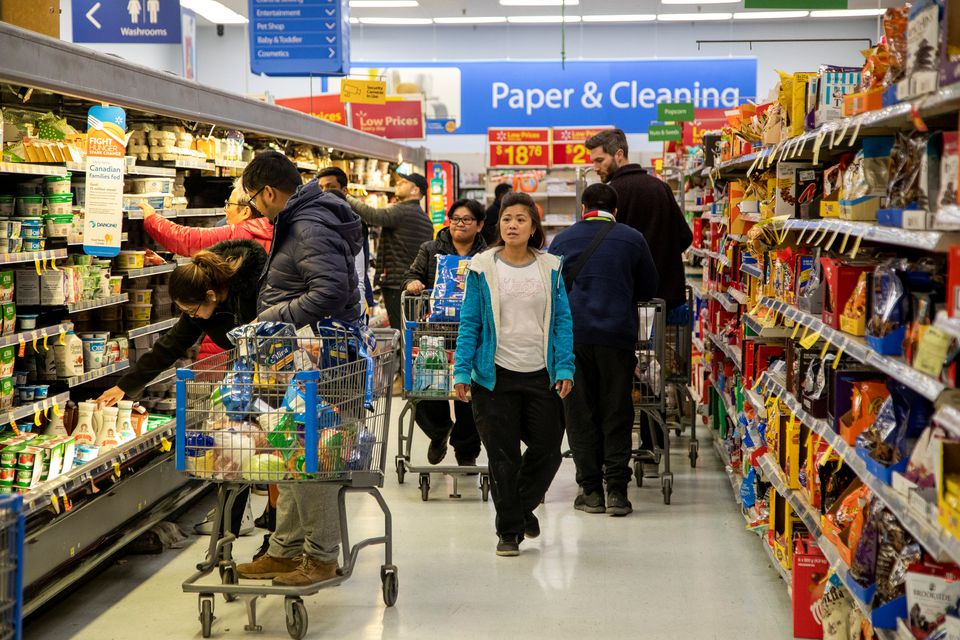SYLVAIN CHARLEBOIS: Chicken Little and Canada’s food inflation

Despite recent price hikes, food remains relatively affordable when compared to many other nations
by Dr. Sylvain Charlebois – PostMedia
The food inflation figures this week offer a ray of hope amid concerns over rising prices.
On a month-to-month basis, it is notable that only the category of fish has exhibited a discernible uptick in costs, whereas all other food categories, encompassing meat, bakery products, and produce, have undergone a reduction in prices compared to the previous month.
“Comparatively, Canada continues to exhibit one of the lowest food inflation rates within the G7, second only to the United States”Indeed, this represents a noteworthy reduction in food costs, signalling an encouraging trend. The food inflation rate has now reached its lowest point since February 2022, and the gap between food inflation and the broader inflation rate has nearly halved over the past month, currently standing at a modest 2.8%.
However, it is disheartening to observe the paucity of upbeat headlines concerning food inflation despite these positive developments. This tendency obviously reflects a prevailing sense of apprehension regarding food affordability, one that seems impervious to the empirical data at hand. It appears that, regardless of what the numbers suggest, there is a pervasive belief that the worst is yet to come.
There is no denying that the surge in food prices has exerted considerable financial strain on numerous households. It is a sobering fact that these prices are unlikely to recede, regardless of the measures undertaken by the government in Ottawa.
The key distinction between the current inflationary cycle and its predecessors lies in its sustained nature. Elevated food inflation has persisted for several months, compelling consumers to alter their spending habits. Many have switched grocery stores and even resorted to shopping at dollar stores in pursuit of more economical alternatives.
Analogous to the unverified claims made by some politicians, who consistently attribute higher food prices to grocers, Canadians appear to be swayed by emotions and gut feelings, perpetuating a belief that circumstances are worsening. Nevertheless, there is reason to anticipate a less stressful environment at the grocery store in the coming fall.
Comparatively, Canada continues to exhibit one of the lowest food inflation rates within the G7, second only to the United States. Despite the spike in food prices, Canadians have fared relatively well when contrasted with numerous European nations. In March of this year, for instance, Germany grappled with food inflation exceeding 20%, while France approached the 16% mark. It is noteworthy that both countries, akin to Canada, possess robust agricultural sectors. In contrast, Canada’s food inflation rate peaked at 10.4% in January of this year.
Another compelling metric emerges when we evaluate countries based on the proportion of expenditure allocated to food relative to total consumer spending, excluding restaurant expenses. According to Our World In Data, Canadians allocate a modest 10% of their total budgets to grocery expenditures. In this context, only five other countries allocate a lower percentage: the United States (6.7%), Singapore (8.4%), the United Kingdom (8.7%), Ireland (9.2%), and Switzerland (9.9%). This metric underscores the financial significance of food in people’s lives. In contrast, France, where the government recently intervened to freeze the prices of 5,000 food products, records a considerably higher proportion of expenditure on food, standing at 14%.
Despite the challenges posed by escalating food prices, Canadians are, by and large, managing reasonably well. It is understandable that many may be disinclined to acknowledge this reality, given that a significant proportion of the population is either directly impacted by the increased cost of living or knows someone who is.
As the government in Ottawa explores avenues to assist Canadians, it may be an opportune moment to contemplate the launch of a national food security program tailored to support children and families who are genuinely unable to afford food – a Canadian adaptation of the Supplemental Nutrition Assistance Program (SNAP), commonly known as the food stamp program in the United States. While undoubtedly a formidable undertaking involving multiple government departments, such a program can be meticulously targeted to provide essential assistance at the grocery store to those in dire need.
Furthermore, it can be customized to ensure that program beneficiaries prioritize the purchase of healthy, ideally Canadian-sourced, locally produced foods. While the summer grocery rebate likely provided some relief, a SNAP program could offer consistent support, independent of economic fluctuations.
In conclusion, it is imperative for Canadians to recognize the advantages of living in this country. Despite recent price hikes, food remains relatively affordable when compared to many other nations. Looking ahead, as forecasted by Canada’s Food Price Report nearly a year ago, there is reason to anticipate concluding the year with a lower food inflation rate, signifying a more stable trajectory for food prices.
Originally published in the Toronto Sun September 20th, 2023












